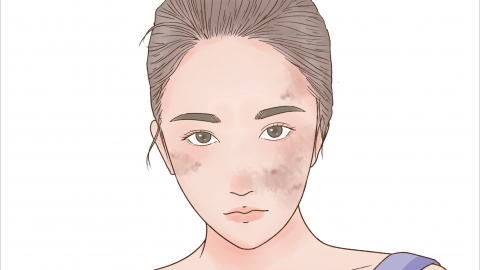How does ultraviolet radiation cause melanin deposition?
Under normal circumstances, melanin deposition caused by ultraviolet (UV) radiation may be related to the initiation of signal transduction, altered gene expression, tyrosinase activation, weakened self-repair, and exacerbated chronic inflammation leading to increased melanin deposition. The analysis is as follows:

1. Signal transduction initiation: When the skin is exposed to UV radiation, the UV light penetrates the stratum corneum and is sensed by melanocytes and other cells in the skin. It can directly damage the DNA within skin cells, prompting the activation of melanocytes.
2. Altered gene expression: In activated melanocytes, the expression of related genes changes, leading to increased synthesis of tyrosinase. Tyrosinase is a key enzyme essential for melanin production and may result in excessive melanin generation.
3. Tyrosinase activation: A series of changes triggered by UV exposure activate tyrosinase, which catalyzes the conversion of tyrosine into intermediates such as dopa and dopaquinone. These intermediates are further transformed into melanin through a series of enzymatic reactions.
4. Weakened self-repair: Repeated UV exposure damages the skin's tissue structure. Normally, the skin can renew melanocytes through its own metabolism. However, as the repair capacity declines, melanin synthesis, transport, and accumulation continue, further aggravating melanin deposition.
5. Exacerbated chronic inflammation: UV radiation often triggers chronic inflammation in the skin. In an inflammatory environment, inflammatory cells release various mediators that affect the normal function of surrounding cells, further disrupting normal melanin metabolism.
To prevent melanin deposition and skin aging caused by UV radiation, it is important to strengthen sun protection by using sunscreen with a high SPF value and following the correct application method. Prolonged sun exposure should be avoided, especially at midday when UV intensity is highest. If necessary, one can visit a reputable hospital for intense pulsed light (IPL) therapy. This treatment uses specific wavelengths of light to selectively target melanin in the skin, converting light energy into heat energy to destroy and decompose melanin. It also stimulates collagen production, improves skin texture and elasticity, accelerates metabolism, and promotes the removal of disrupted melanin particles from the body.The typical reference price for IPL treatment ranges from 2000 to 4000 RMB per session, with noticeable improvement often seen after 3 to 5 sessions, although mild discomfort may occur.








